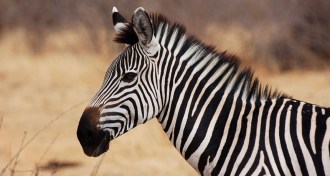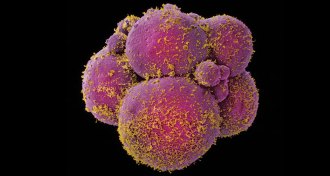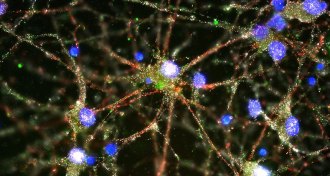Life
Sign up for our newsletter
We summarize the week's scientific breakthroughs every Thursday.
-
 Animals
AnimalsPurpose of zebra stripes remains a mystery
Zebra stripes don’t help the animals disappear in the vision of predators, a new study finds.
-
 Genetics
GeneticsDNA may determine if you’re an early bird or night owl
Morning people are more likely to have certain variations in their DNA, but less likely to have insomnia or sleep apnea.
-
 Genetics
GeneticsDNA may determine if you’re an early bird or night owl
Morning people are more likely to have certain variations in their DNA, but less likely to have insomnia or sleep apnea.
-
 Genetics
GeneticsU.K. first to approve gene editing of human embryos for research
The United Kingdom is the first government to approve gene editing in human embryos for research purposes.
-
 Climate
ClimatePhytoplankton rapidly disappearing from the Indian Ocean
Phytoplankton populations in the Indian Ocean fell 30 percent over the last 16 years largely due to global warming, new research suggests.
-
 Microbes
MicrobesRandom changes in behavior speed bacteria evolution
Microbes can speed up evolution by changing phenotypes.
-
 Animals
AnimalsBehavior, body size impact bats’ fight against white-nose syndrome
Behavioral and physical traits buffer some bats against white-nose syndrome while leaving others vulnerable.
-
 Neuroscience
NeuroscienceImmune system gene leads to schizophrenia clue
Excessive snipping of nerve cell connections may contribute to schizophrenia.
-
 Genetics
GeneticsReaders question gene-drive engineered mosquitoes and their predators
Readers discuss the effects of gene-drive engineered mosquitoes and muse on their science bucket list.
-
 Science & Society
Science & SocietyPowerful rhetoric can overlook important details
Our Editor in Chief discusses the potential hazards of broad generalizations, specifically when it comes to genetically modified foods and abundant energy.
By Eva Emerson -
 Genetics
GeneticsGMOs haven’t delivered on their promises — or risks
Genetically modified foods have been studied extensively and are abundant on supermarket shelves, but they haven’t managed to end world hunger yet.
-
 Animals
AnimalsSkin color changes reveal octopus drama
Shallow-water octopuses use changes in skin color to communicate aggression to their peers, study suggests.